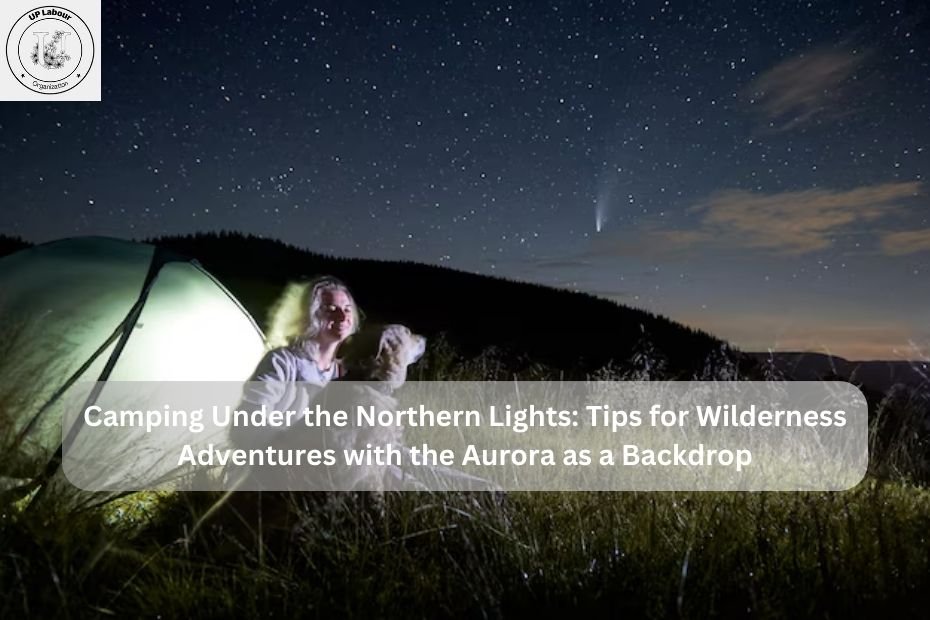Camping under the Northern Lights is a dream for many outdoor enthusiasts and nature lovers. Imagine setting up your campsite in the wilderness, surrounded by pristine landscapes, while vibrant colors dance across the night sky. It’s a magical experience that combines the thrill of camping with the awe of one of nature’s most spectacular phenomena. Whether you’re a seasoned camper or a first-timer, this guide will provide you with tips to ensure a safe, enjoyable, and unforgettable adventure under the aurora.
Understanding the Northern Lights
Before diving into the camping tips, let’s take a moment to appreciate what the Northern Lights, or Aurora Borealis, actually are. These beautiful light displays occur when charged particles from the sun collide with atoms in the Earth’s atmosphere. This interaction creates stunning colors that range from greens to pinks to purples, painting the night sky. While the best views are often found in northern regions, you can catch glimpses of this natural wonder in many parts of the United States and Canada.
Best Time to Go Camping
Timing your trip is essential for maximizing your chances of seeing the Northern Lights. The ideal season is typically from late September to early April. During these months, the nights are longer, which increases your chances of witnessing the auroras.
Keep an eye on solar activity, as higher levels of solar flares and geomagnetic storms can lead to more intense auroras. Websites and apps that provide aurora forecasts can help you choose the perfect night for your adventure.
Choosing the Right Location
Selecting the right campsite is crucial for a successful Northern Lights experience. Here are some top locations in North America where you can immerse yourself in nature while enjoying stunning views of the aurora:
1. Alaska
- Denali National Park: Known for its breathtaking landscapes and wildlife, this park offers dark skies perfect for viewing the auroras.
- Fairbanks: Often touted as one of the best places to see the Northern Lights, Fairbanks provides various camping options and guided tours.
2. Minnesota
- Voyageurs National Park: This park offers stunning lakes and is less crowded than other destinations, making it a peaceful spot for stargazing and aurora watching.
3. Montana
- Glacier National Park: With its high elevation and remote areas, Glacier National Park provides ample opportunities to see the auroras.
4. Canada
- Yellowknife, Northwest Territories: Known as the “Aurora Capital of North America,” Yellowknife boasts clear skies and great viewing conditions.
When choosing a campsite, look for areas away from city lights and pollution to ensure the best views of the night sky.
Preparing for Your Camping Trip
1. Gear and Supplies
Having the right gear is crucial for a comfortable and safe camping experience. Here’s a checklist of essentials you should bring:
- Tent: Choose a four-season tent designed for cold weather. Ensure it’s sturdy enough to withstand wind and snow.
- Sleeping Bag: Invest in a sleeping bag rated for low temperatures to keep you warm during the chilly nights.
- Sleeping Pad: A sleeping pad adds insulation and cushioning, making it more comfortable to sleep on the ground.
- Warm Clothing: Layering is key. Bring thermal base layers, fleece or down jackets, and waterproof outer layers to protect against the elements.
- Headlamp or Flashlight: A reliable light source is essential for navigating your campsite at night. Don’t forget extra batteries!
- Cooking Equipment: A portable stove, cookware, and utensils will make meal preparation easier.
- Food and Water: Pack enough non-perishable food for your trip, and bring a reliable water purification method.
2. Staying Warm
Keeping warm is essential when camping in cold weather. Here are some tips:
- Dress in Layers: Start with moisture-wicking base layers, add insulating layers, and finish with a waterproof and windproof outer layer.
- Use Hand and Foot Warmers: These can provide extra warmth during particularly cold nights.
- Warm Drinks and Food: Enjoying warm meals and drinks can help maintain your body temperature.
3. Safety First
Safety should always be a priority when camping in the wilderness. Here are some important safety tips:
- Tell Someone Your Plans: Always inform a friend or family member about your camping plans, including your location and expected return date.
- Know the Area: Familiarize yourself with the terrain and any potential hazards in the area, such as wildlife or difficult hiking trails.
- First Aid Kit: Always carry a well-stocked first aid kit, including items for treating minor injuries and ailments.
Setting Up Camp
Once you arrive at your campsite, it’s time to set up. Here are some tips for a successful camping setup:
1. Choose Your Spot Wisely
Look for a flat area to pitch your tent. Avoid low-lying spots where cold air may settle, and try to find a location that offers a clear view of the northern sky.
2. Create a Campfire Area
If allowed, set up a fire pit for warmth and cooking. A campfire also adds a cozy atmosphere and can serve as a gathering place. Just remember to follow all fire safety guidelines and regulations.
3. Keep Your Gear Organized
Organize your gear and supplies to make it easy to access everything you need. Use dry bags to keep your clothing and sleeping gear safe from moisture.
Enjoying the Experience
1. Be Patient
While the Northern Lights can be breathtaking, they may not always appear as expected. Be patient and enjoy the natural beauty around you while you wait for the show to begin.
2. Engage with Nature
Take advantage of your time in the wilderness. Explore nearby trails, go wildlife spotting, or enjoy a quiet moment of reflection by the campfire.
3. Capture the Moment
Don’t forget your camera! When the Northern Lights finally make their appearance, you’ll want to capture the magic. Here are a few tips for photographing the auroras:
- Use a Tripod: This will keep your camera steady during long exposures.
- Adjust Your Settings: Use a wide aperture (f/2.8 or lower), a high ISO (800-3200), and a long exposure (10-30 seconds) to capture the lights.
- Experiment with Composition: Include elements of the landscape in your shots, such as trees or mountains, to create depth.
Conclusion
Camping under the Northern Lights is an experience like no other. The beauty of the auroras, combined with the tranquility of the wilderness, creates a magical setting that stays with you long after the trip ends. By preparing adequately, choosing the right location, and embracing the adventure, you can create unforgettable memories. So pack your gear, head into the wild, and get ready to be amazed by the spectacular show of the auroras dancing in the night sky. Happy camping!

